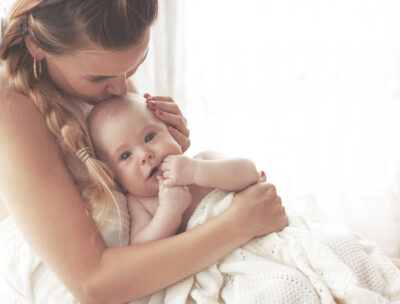
No question about it, twins are adorable. Matching outfits, matching faces, double the baby cooing and gurgling. Two is always better than one, right?
Not necessarily, especially when it comes to the choice of implanting one or two embryos during in vitro fertilization (IVF). Most fertility specialists, us included, believe that the goal of assisted reproductive technology (ART) is to produce a single healthy infant. Transferring a single embryo rather than two is the best way to achieve this goal.
Why one is better than two
Depending on the patient, implanting two embryos can slightly increase the chance of at least one of those embryos implanting and resulting in a successful pregnancy. Implanting two embryos can also result in those adorable twins, which is particularly appealing to parents needing IVF to get pregnant. They often think they can get two kids in one try and not have to go through IVF again.
But a pregnancy with twins can be more dangerous than adorable. Multiple pregnancy – which we call a pregnancy of twins, triplets or more – is fraught with potential health problems for the children and mother.
Schedule an Appointment
Multiple gestation pregnancies have higher risks for low birth weight children and premature birth, which can result in infant mortality or other problems for the children. Problems can include needing special care at birth (short or prolonged neonatal intensive unit care) and facing long-term issues such as developmental delays, ongoing lung and gastrointestinal dysfunction, cerebral palsy and other debilitating problems.
The mother carrying twins has an increased risk of Caesarean section, which prolongs recovery and can result in hemorrhage during and after delivery. Worse, one or both fetuses may not survive to term and require removal. Carrying twins can also increase mom’s morning sickness, weight gain, and risk of developing gestational diabetes and blood pressure problems including preeclampsia. Further, the sleep deprivation, fatigue, marital and family stress created from caring for more than one baby has been shown to be far higher than when caring for one at a time.
Mothers and fathers have a choice: implant a single embryo or two. While it is possible to implant more than two embryos (remember Octomom?), few doctors will do that these days.
Ready, eSET (single embryo transfer), go
The latest national data from the Society for Assisted Reproductive Medicine show that the number of women under age 35 who chose eSET in their first IVF cycle jumped nearly 9 percent in 2016 over 2015. In total, just over half of all women under 35 undergoing their initial IVF cycle elected to transfer only one embryo. This is encouraging news.
At Tennessee Reproductive Medicine, we’ve been suggesting that women consider eSET since 2011, and our patients have responded positively. Preliminary data from 2016 show that 46 percent of patients under 35 used eSET in their first IVF cycle. This is a substantial increase from 35 percent in 2015. We certainly hope to see this trend continue.
If eSET doesn’t work, that doesn’t mean a woman has to start all over again with IVF. When a mother elects to transfer just one embryo she usually has other viable embryos from IVF that can be frozen and used in another implantation procedure, should the first single-embryo transfer not succeed.
What’s more, depending on the patient, eSET can actually provide the best chance for each individual embryo to implant. Unforeseen complications of the IVF cycle or pregnancy, such as an unexpectly difficult transfer or maternal illness can endanger both embryos if two are implanted together. These risks are, of course, minimized to just one embryo when we implant one at a time.
There is also a growing body of research that embryos are sometimes rejected by certain women due to hyperactivity in the immune system. Due to the fact that the embryo contains 50 percent DNA that is foreign to her body (that of the dad-to-be), her body can treat it as a foreign invader. Transferring more than one embryo increases the amount of foreign DNA exposed to her immune system. This is a very new field of research, but nonetheless adds to the growing number of reasons to transfer just one embryo at a time.
Singular success
The Centers for Disease Control says that women who are good candidates for eSET experience pregnancy and live birth rates very similar to women who transfer more than one embryo. Almost all of those eSET births were singletons, which saved a lot of mothers and twin babies from medical complications.
Now for the but: transferring one embryo isn’t always the best option for all IVF patients. We generally recommend eSET only to women who have a good chance of becoming pregnant through IVF. If a woman is over the age of 35 or the underlying cause of infertility will make it difficult to become pregnant even through IVF, then it may be recommended that two embryos be transferred to bring the chances of a singleton pregnancy up to an appropriate level.
We’ll need to take each woman’s health factors into consideration and discuss with her the prospects for transferring a single embryo.
Factors that indicate single embryo transfer may be an option include:
- Women under age 35
- Two or more high-quality embryos
- This is the first IVF attempt
- Previously successful IVF cycle
We encourage women who are good candidates to consider eSET; it’s the best way to protect your child’s health as you make one of your first decisions as a mother.
